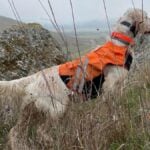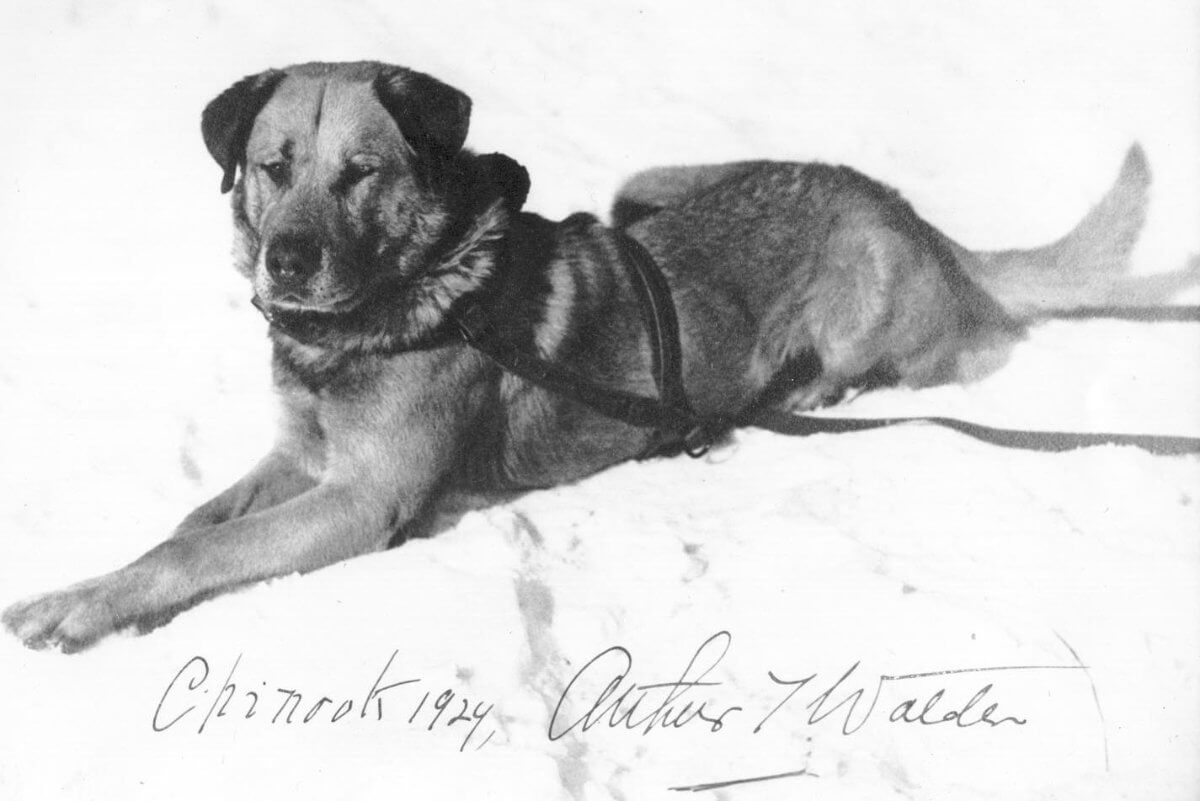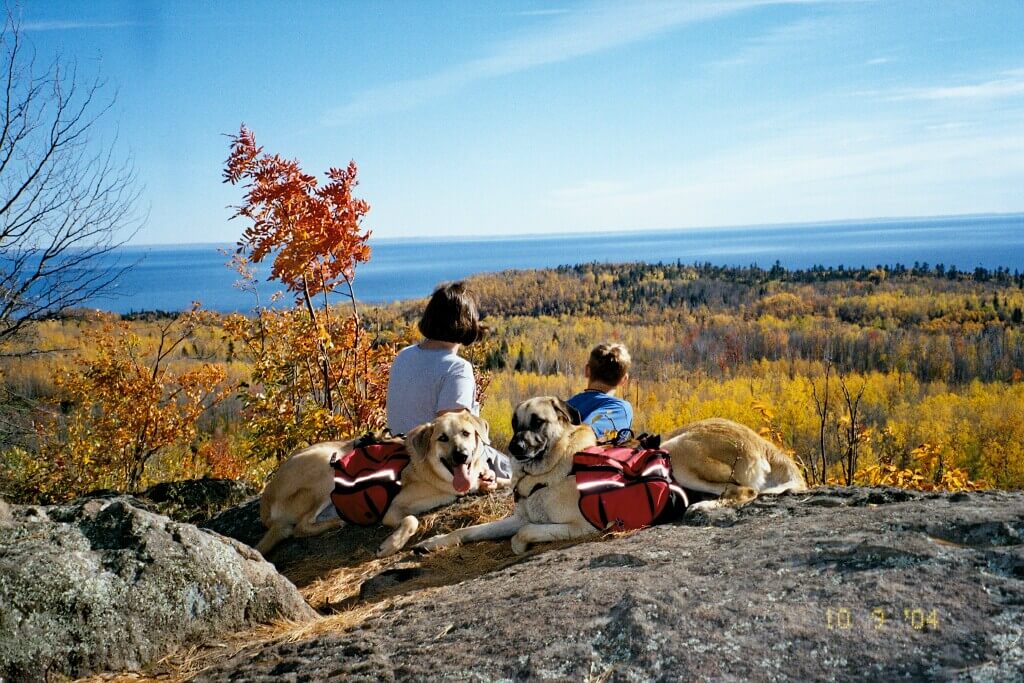
Home » Chinooks

This article was originally published in Showsight Magazine, October 2013 issue.
Chinooks are a breed apart. Truly an American dog, they have accomplished much in the 96 years since the birth of the first pup in New Hampshire. The dam was a Greenland Husky descended from Admiral Peary’s lead-dog Polaris and the sire was a St. Bernard/Mastiff-type dog. Chinook was one of 3 pups. But Chinook was unique and the breed to this day does not share any of the Spitz traits typifying sled dog breeds. Unlike Huskies and Malamutes, Chinook was a large tawny dog with down ears and broad, blocky head, weighing 100 pounds. Unlike the bushy coats of Spitz breeds, Chinook’s coat laid close to his body. Most importantly, Chinook’s loving, easy-going disposition made him an ideal companion. Chinook was a “sport” and reproduced himself when bred to other dogs. His unique traits made “Chinook” the obvious choice for the breed’s name.
To Chinook owners, however, the historical contributions pale in comparison to the characteristic gentle temperament, solid work ethic, and broad versatility that Chinook bestowed on his descendants and distinguishes them from sled dogs and other large breeds, making them uniquely American. His descendants are still tawny with a blocky head and a wash and wear coat that only sheds out once or twice a year. Like Chinook, his descendants are characterized by service.
Today’s Chinooks can still be found in harness – but that harness is just as likely to be pulling skis, bicycles and carts, as it is a sled. Other Chinooks carry packs and are as much at home in kayaks as they are on the couch. Chinooks love agility, rally, obedience, visiting hospitals and nursing homes as therapy dogs, or in classrooms as “Tail Waggin’ Tutors” helping children learn to read. As a large breed, regular exercise and training will ensure a healthy Chinook that behaves appropriately. Harsh handling or lack of socialization may create a shy Chinook, but rarely an aggressive one. Chinooks need to be with their owners and don’t do well if regularly left alone for long periods. They are not good kennel dogs, not territorial and therefore, not good guard dogs.

Chinooks are intelligent, sensitive, and catch on quickly to consistent training. They gravitate toward children and are gregarious with other dogs. Chinook Club of America attends many of the AKC Meet the Breeds. We’re the booth where children are “hand” holding a Chinook and Chinook kisses are always available! An amazing family dog coupled with work ethic and versatility gave the Chinook a proud and historical past and offers it a bright future!
Arthur T. Walden, Chinook’s owner, was an explorer, author, innkeeper, and most importantly, a sled dog driver. Walden and his dog sled team, with Chinook in lead, were credited with bringing the sport of sled dog racing to New England and founded the New England Sled Dog Club in 1924; the oldest club of its kind still in operation. But history had an even bigger role in mind for Walden and Chinook. Walden was appointed to head the Dog Department for Admiral Richard Byrd’s first Antarctic Expedition in 1927. Walden and his sixteen Chinook dogs were described by Admiral Byrd as the backbone of the expedition transport. In fact, in 1931, Walden received the Congressional Medal for his part in Byrd’s Antarctic Expeditions.
But more than a sled dog, Chinook’s gentle temperament allowed Byrd to take him to lectures and fund-raising events. Chinook became the signature dog of Byrd’s expeditions. Chinook made news around the world when he was 12 and was lost during an expedition. At Walden’s request, Route 113A from Tamworth to Wonalancet, New Hampshire, now bears the name “Chinook Trail” to honor his famous lead dog.

The Depression forced Walden to sell his beloved Chinooks, but their imprint on American life continued. For a time, they were the face of Old Mother Hubbard Dog Food. From the 1940s into the 60s, they were solely bred by Perry Greene in Waldoboro Maine and it was a Chinook named Charger that was obtained as a mascot for the Boeing Helicopters and sent to Vietnam. By the 1980’s, the breed almost died out, but efforts by breeders brought the breed back and it now numbers about 1000 dogs. In 1991, Chinooks entered the UKC registry and in 2001 the breed began seeking AKC recognition. 2009 brought the unexpected honor of being named the state dog of New Hampshire, brought about by the efforts of New Hampshire’s Lurgio Middle School students. Chinooks entered AKC Miscellaneous Class in 2010 and the Working Group in 2013. We currently have a few AKC Champions and a Group IV win in the Working Group. For more information and a list of Mentors and Presenters contact The Chinook Club of America.
The Chinook is unequalled by any other breed in its success as a house pet while still maintaining its versatility as a working dog. Created to be happy both in harness and at the hearth, the Chinook has overcome near extinction to once again enjoy the love of so many people around the world. From the South Pole in 1930 to the AKC Working Group in 2013, it has been a long journey for the Chinook… a journey on which the Chinook enthusiastically embarks with happy barks and wagging tails.
